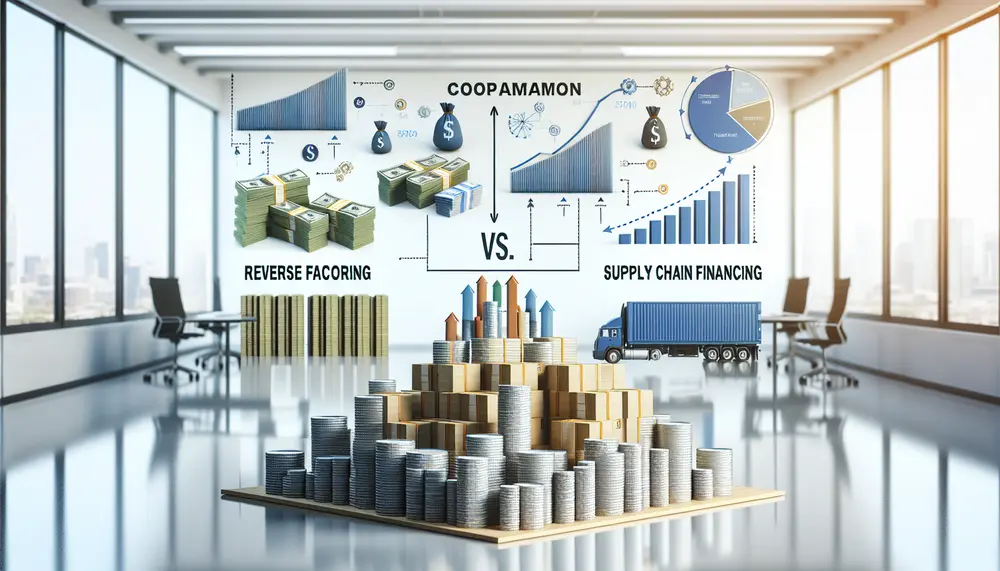Early payment discount
Early payment discount
What Is an Early Payment Discount?
An Early Payment Discount is a type of incentive offered by sellers to buyers for settling their invoice ahead of the due date. In essence, it rewards customers with a reduced price if they pay their bills promptly. Imagine it as a thank-you gesture for early payment.
How Does an Early Payment Discount Work?
Typically, this discount is expressed as a percentage of the total invoice amount. For example, the terms could be stated as "2/10, net 30," which translates to a 2% discount if the invoice is paid within 10 days, otherwise, the full amount (net) is due in 30 days.
Early Payment Discount in Financial Factoring
When it comes to Financial Factoring, an Early Payment Discount can become a strategic tool. Factoring involves a business selling its invoices to a third-party company, known as a factor, for a percentage of their total value. This action provides the business with quick cash flow. If customers take advantage of the Early Payment Discount, the factor may also benefit from reduced credit risks and faster turnover.
Benefits of Early Payment Discounts
For businesses, the prompt cash from early payments can help manage cash flow more effectively. For buyers, it means saving money. It's a win-win: companies speed up their cash cycles and buyers pay less.
Considering Early Payment Discounts
While an Early Payment Discount can be attractive, businesses should consider their cash flow needs and whether the discount might affect their profit margins. It is crucial to find a balance that benefits both the seller and the buyer financially.
Conclusion
In summary, an Early Payment Discount is a mutually beneficial approach in financial transactions, particularly in the realm of Financial Factoring. It not only enhances the vendor's liquidity but also offers a tangible financial advantage to customers who pay quickly.
Blog Posts with the term: Early payment discount

Factoring is a financial strategy where businesses sell their invoices to a third party, the factor, for immediate cash flow without incurring debt. It provides not only accelerated funds but also credit management services and can be more flexible than...

Factoring is a financial strategy where businesses sell their invoices to a third party for immediate cash, improving liquidity without incurring new debt. It requires understanding terms like advance rates and fees, choosing the right factoring company with industry expertise,...

Reverse factoring is a buyer-initiated financing solution that leverages the buyer’s credit to offer suppliers faster, lower-cost payments and strengthen supply chain resilience....

Factoring fees are costs businesses pay to get immediate cash flow through invoice factoring, influenced by factors like invoice volume and client creditworthiness. The impact of these fees on a business's finances is significant, affecting net income and requiring careful...

The article compares reverse factoring and supply chain financing, highlighting their differences in initiation, process, flexibility, cost structure, and risk management. It explains that while both methods aim to improve cash flow and strengthen financial relationships within the supply chain,...

Reverse Factoring and Confirming are financial tools that enhance cash flow management in businesses by ensuring suppliers receive payments promptly while allowing buyers to manage their finances more effectively. Reverse Factoring is initiated by the buyer to help suppliers finance...

Factoring is a financial transaction where businesses sell their accounts receivable to a third party at a discount for immediate cash, improving their cash flow and working capital. It's an alternative funding method that doesn't increase debt, often used by...

Factoring involves selling accounts receivable to a third party for immediate cash flow, while Confirming (reverse factoring) is when a financial intermediary pays supplier invoices on behalf of the business, extending payment terms. Both services aid in managing different aspects...

Factoring is a financial strategy where businesses sell their accounts receivable to a third party at a discount for immediate working capital, aiding in liquidity and growth. It offers improved cash flow without debt, assumes credit risk management, provides administrative...

Factoring and discounting are financial services that help businesses improve cash flow by providing funds based on outstanding invoices, but they differ in mechanics, risks, and benefits. Factoring involves selling invoices to a third party who takes over collection, while...

Factoring involves a business selling its invoices to a third party for immediate cash, while reverse factoring is when a financial institution pays the business's suppliers and gets reimbursed later by the business. Both methods improve cash flow but differ...

Factoring in banking offers businesses immediate cash by selling outstanding invoices to a third party, improving their cash flow without creating debt. It includes services like credit management and can be more accessible than traditional bank financing due to its...

A factoring facility is a financial service where businesses sell their invoices to a third party, the factor, for immediate cash, improving liquidity without incurring debt. Factoring can be with recourse (business bears risk of non-payment) or non-recourse (factor assumes...

Short-term finance factoring allows businesses to sell their invoices for immediate cash, providing a quick solution for working capital without incurring debt. It's beneficial for managing cash flow and operational costs but depends on the creditworthiness of customers and can...
